Anjuna, Goa is a picturesque place, famous for its bustling markets, unusual beach parties and a unique atmosphere that encourages round-the-clock fun.
General information
Anjuna is a small resort village located in the northern part of Goa near its capital, Panaji. The population is slightly more than 9 thousand people. The high season lasts from November to April, when the air temperature ranges from +30 to +33°C, and the water off the coast of the Arabian Sea warms up to +27…+29°C. There is little rain at this time, and a light breeze coming from the coast does not interfere with a good rest.
Many of the houses in the village date back to when India was a Portuguese colony. Now most of them are equipped with hotels. In addition, you can see several ancient churches and chapels, among which the most noteworthy is St. Michael’s Church, built in 1595 and is the oldest religious building in the state.

Anjuna was first mentioned in the 60s of the last century. Then hippies, freaks and other non-standard personalities began to gather en masse in this part of India, turning the coastal village into the center of Goa’s party life. Today, the best trance parties are held here, falling on New Year’s and Christmas holidays. But the rest of the time, life at the resort is full of exuberant colors. And not only figuratively, but also literally, because even the trunks of palm trees growing on the territory of the village are decorated with various drawings.
Beach
Anjuna Beach, which stretches along the coast of the Arabian Sea for almost 2 km and is covered with soft white sand, is more suitable for noisy young people than for a quiet family holiday. Firstly, it is not as secluded as other resorts in Goa, and secondly, there are sharp underwater rocks that you can easily injure yourself. Yes, and strong waves, constantly rolling on the coast, and strive to carry away vacationers in the sea. To prevent this from happening, rescuers are constantly on duty in Anjuna.
The beach area is quite narrow, shaded by curved palm trees hanging down to the water. Umbrellas and sun beds belong to beach necks – to get them for free use, you need to order food or some kind of drink. The service is provided free of charge to guests of coastal hotels.
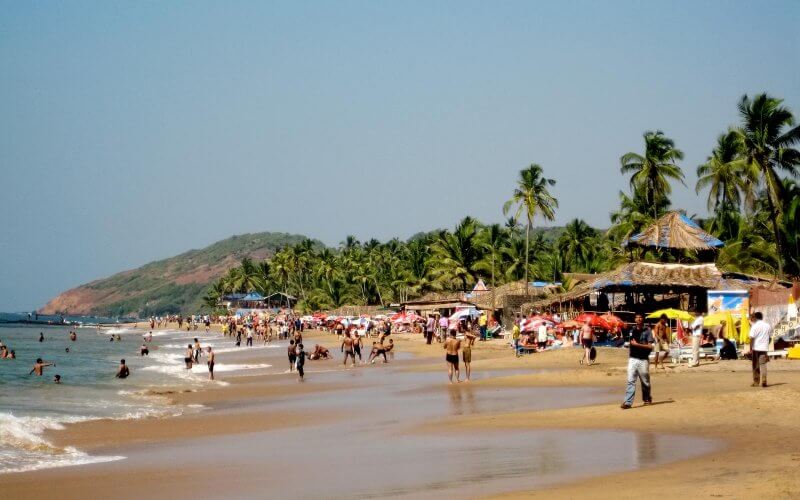
The sea in Anjuna is cloudy, sometimes covered with small oil stains from ship’s fuel waste. The coastline is regularly cleaned, but due to the proximity of the night market, it is never completely clean, and the vacationers themselves leave behind whole mountains of garbage. Despite its modest size, it has everything for a rich and interesting holiday. You can go snorkeling, surfing or diving, ride elephants, watch a snake charmer perform, or take part in car races hosted by the local go-karting center.
The main feature of Anjuna Beach in Goa (India) are numerous trance parties and Full Moon Party, starting at sunset and lasting until the morning. Where and when the next event will take place, you can find out from local residents or employees of the endless series of cafes built along the entire coast. No less interesting for tourists is the Royal Hippie Market, located in the immediate vicinity of the beach. The only flea market in Goa, covering an area of several hectares, is a unique event that can easily compete with the Brazilian carnivals in the riot of colors, noise and bustle. Here you can buy a lot of different goods-from things with Indian embroidery and colorful blankets to jewelry and CDs with the latest trance music. However, most tourists come here not so much for shopping, but for vivid impressions and a truly unique atmosphere. In addition, on the market you can find tattoo artists, various massage therapists, hairdressers and piercers who are ready to fulfill any whim of the client for a small amount of money.
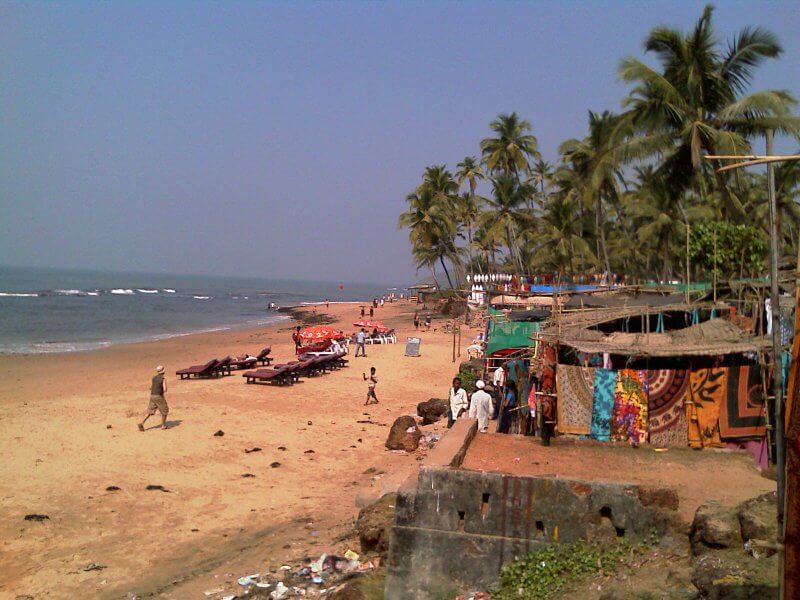
Accommodation
Looking at photos of Anjuna Beach, you will probably notice many bungalows and small guest houses stretching along the entire coastline. Most of them have nothing but a bed and shower, but there are windows that overlook the sea. The cost of such accommodation (from$ 11 per day) is available even for budget tourists. If you want to live in a gasthouse owned by one of the hippies, get ready to pay from $ 40 to $ 55. The only drawback is the music, which does not stop even after dark.
No less choice of housing can be found in the village. There are both small hostels and modern hotels of various levels (1-4*). The room price starts from$ 23, but in some cases it can reach$85. At the same time, the houses of local residents are in the greatest demand – with the onset of the high season, they move to special temporary shelters, and their homes, consisting of 2-3 rooms, are rented out to vacationers.
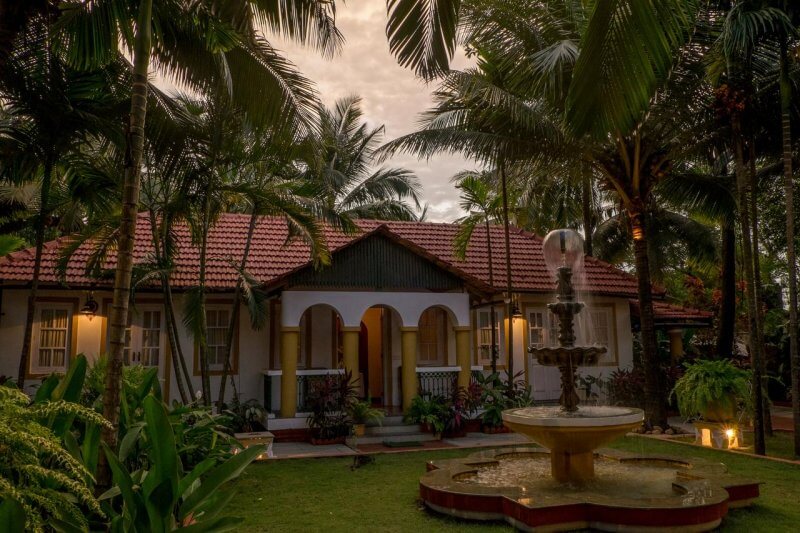
Food
Anjuna Beach, however, like other resorts in Goa, is literally dotted with small beach restaurants where you can taste both local and European cuisine. The cost of dishes in different establishments is about the same – the only difference is in the menu, taste and portion size. The service here is simply excellent – to get a client, the shakes are ready for anything.
Among the most popular establishments are the Avalon Sunrise cafe, famous for its delicious pea soup and paneer cheese in tomato sauce, the Basilico restaurant, opened by an Italian chef, and the Tantra Beach Shack, which offers national and vegetarian dishes. You can also eat well at the local market. In addition to traditional Indian sweets, cane juice, masala tea and ice cream, there are hearty snacks prepared directly on the street.
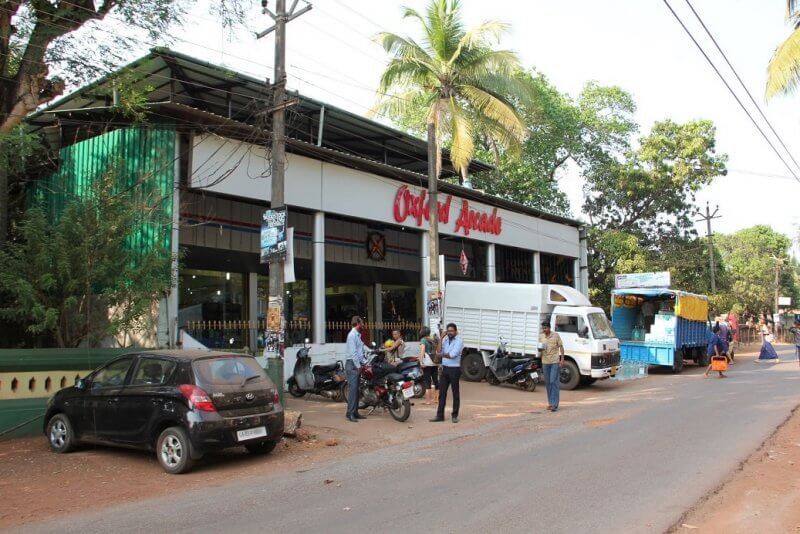
In addition, near the beach there is a large supermarket “Oxford”, which, in addition to organic food, contains natural cosmetics, Ayurvedic herbs and a lot of other goods. Another distinctive feature of Anjuna’s coastal establishments is a wide variety of alcoholic beverages. Everyone here drinks beer, rum and liqueurs made from coconuts and exotic fruits, including Hindus who do not drink alcohol in principle.
As for prices, lunch for two in a beach shake will cost $ 3-4, while visiting a medium-priced restaurant will drag on all$15. A cup of coffee at the coffee shop costs$ 1.30, rice with chicken – $ 2.50, fruit salad, omelette, various soups, milk porridge and a bottle of local beer – about$1.
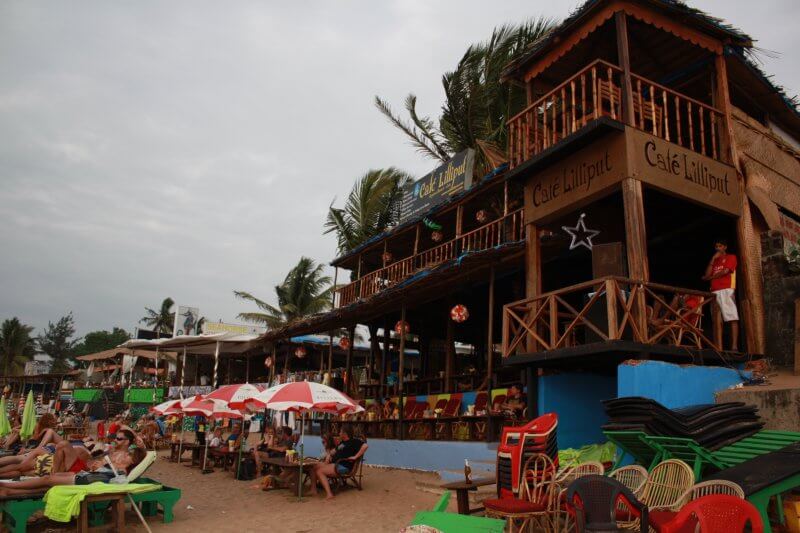
On a note! Those who are vacationing in Goa for the first time, you should not pounce on local delicacies on the first day. Food in India is quite spicy, so first you should order something European or ask for food without adding spices (“No spicy”). If your stomach does not accept spicy food at all, choose something neutral-grilled fish, tortillas, fruit, omelette or momo.
How to get from Dabolim Airport?
The distance between Anjuna and Dabolim Airport, which serves both charter and seasonal flights, is about 50 km. You can overcome them in 3 different ways. Let’s look at each of them.
Method 1. By bus
Cheap, but very long. Moreover, you will have to make several transfers. The whole route looks like this: Vasco da Gama (stop “Chikalim Junction”) – Panaji-Mapusa-Anjuna. The journey will take at least 2 hours. The average price of a trip is 50-60 cents.
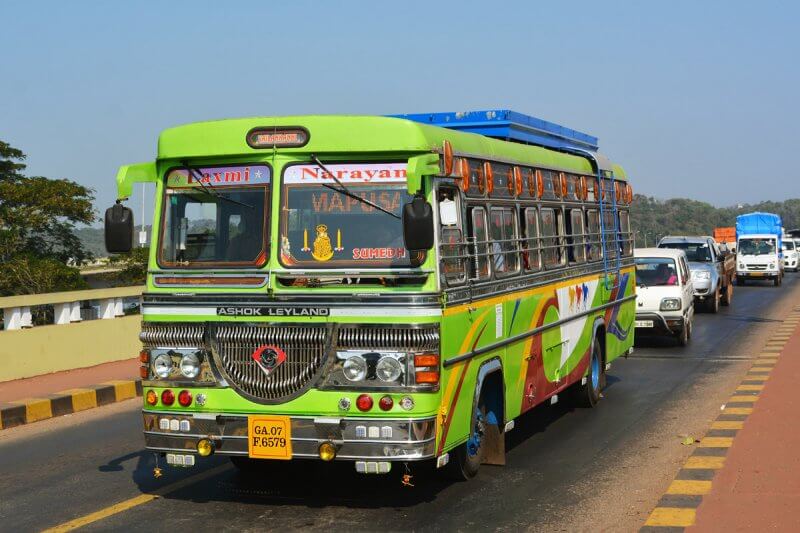
On a note! Buses in Goa run irregularly and in most cases are packed to capacity, so tourists with a large amount of luggage should use a more convenient mode of transport. There is no numbering here, but the direction of the flight is indicated on a sign inserted in front of the windshield.
Method 2. By train
First you need to drive to the Tiwim railway station in Mapusa, located 16 km from Anjuna. From there, the resort is accessible not only by public transport, but also by taxi. In addition, you can rent a scooter or use bike and auto – rickshaw services if you wish.
On a note! It is better to buy a train ticket in advance. It is almost impossible to do this immediately before sending it.
Method 3. By taxi

Despite its high cost, this method of transportation is the fastest and most convenient. The journey takes about an hour. The cost of travel is from$ 10 to $ 14, depending on the level of comfort. You can order a car either at the airport terminal or via the Internet. Alternatively, just catch it on the street. The most popular services in the region are “Prepaid taxi”and” Goa taxi”.
On a note! There are no counters in cars, the price is fixed, and payment is made upon boarding. If you want to save at least a little, opt for private traders – you can bargain with them.
Useful tips

When going to the resort of Anjuna (Goa, India), listen to the advice of those who have already been lucky enough to visit there:
- When renting something, do not give your passport as a deposit – it is better to make a couple of copies and always carry them with you.
- There are not so many full – fledged gas stations in Goa-the nearest one from Anjuna is in Vagator. As for gasoline bottled in liter bottles, it is expensive, and its quality is very low.
- Having a license in India is not mandatory – scooters and motorcycles are often given without them, and problems with the local police are solved with a small bribe.
- In Anjuna, it is not only possible, but also necessary to bargain. Otherwise, the seller will be offended and will not sell the product you are interested in for any money.
- To protect yourself from intestinal infections, wash not only your hands with soap, but also fruits. For the same reason, avoid adding ice to drinks – it could be made from tap water, the use of which can lead to very sad consequences.
- When walking around the market, be very careful. Theft is not uncommon here.
- In India, as in any other tropical country, there are a lot of poisonous animals, so on vacation you should be extremely careful, and in case of bites or wounds, be sure to treat the wound with an antiseptic and contact the nearest medical center.
- Fennel seeds will help you digest spicy Indian food. Small bowls of this “medicine” usually stand at the exit of restaurants or at the cash registers of fast food outlets.
- No part of Anjuna’s life is complete without drugs. But if the police simply turn a blind eye to local residents, then visitors are not pampered here. Many were even imprisoned.
- It should also be noted that various types of syphilis, hepatitis and other sexually transmitted infections are common in India, so it will be better to limit contacts with potential carriers of viruses.

